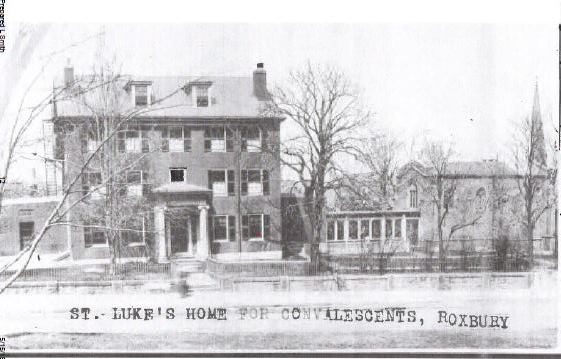
30 Jul HBI Team Plots Course for Rehabilitating St. Luke’s Chapel and Ionic Hall
In May we shared the news that HBI had been enlisted by the Episcopal Diocese of Massachusetts and the Parish of St. John St. James in Roxbury to prepare a feasibility study to preserve and rehabilitate the two historic buildings that make up the Episcopal Church of St. John St. James. We assembled a team led by Lynne Spencer at Spencer, Sullivan & Vogt to assess the condition of both buildings and help explore possible uses for reactivating the currently vacant spaces in both buildings.

Following discussions with the St. John St. James congregation and the Diocese, a plan has been recommended by our team to phase the rehabilitation of the two buildings. The St. John St. James congregation currently worships in a chapel in the 1960s rear addition of Ionic Hall, but due to severe water damage to the building’s mechanical systems, there is no heat or water, so that the church’s main worship space cannot be used over the winter, and could not be available during the rehabilitation of Ionic Hall, which could take a few years. Therefore, the plan is to focus first on completing the rehabilitation of St. Luke’s Chapel first, so that the congregation will have a home for worship while the more extensive work required for Ionic Hall is being completed.
 St. Luke’s Chapel was designed in the Gothic Revival style by well-known ecclesiastical architect Ralph Adams Cram and was built sometime between 1893 and 1900 for use by the residents of Ionic Hall, which was at that time St. Luke’s Convalescent Home for the Sick and Aged. There was at one time a covered passageway leading from Ionic Hall to the chapel, but that is long gone. St. Luke’s is a tiny building – the sanctuary is not quite 900 square feet – and it currently has no heating, plumbing, or electrical systems in place. The building envelope is in need of repair, and there is no handicapped accessibility. Perhaps the biggest design challenge for the chapel’s rehabilitation is where to locate a bathroom, which it has never had. There is also a desire for a small kitchenette for post-church service coffee and social hour, which is also a bit of a puzzle. But thankfully, the interior carvings and stained glass windows are not too badly damaged and can be restored.
St. Luke’s Chapel was designed in the Gothic Revival style by well-known ecclesiastical architect Ralph Adams Cram and was built sometime between 1893 and 1900 for use by the residents of Ionic Hall, which was at that time St. Luke’s Convalescent Home for the Sick and Aged. There was at one time a covered passageway leading from Ionic Hall to the chapel, but that is long gone. St. Luke’s is a tiny building – the sanctuary is not quite 900 square feet – and it currently has no heating, plumbing, or electrical systems in place. The building envelope is in need of repair, and there is no handicapped accessibility. Perhaps the biggest design challenge for the chapel’s rehabilitation is where to locate a bathroom, which it has never had. There is also a desire for a small kitchenette for post-church service coffee and social hour, which is also a bit of a puzzle. But thankfully, the interior carvings and stained glass windows are not too badly damaged and can be restored.
Once the work at St. Luke’s is completed, which will likely take a year from construction start, the congregation will have a beautiful space for worship. We anticipate Ionic Hall and its 1960s addition will follow soon after as phase two, and when that work is complete, the congregation can move back to its current worship space. The restored St. Luke’s chapel will then likely be made available for other uses, such as community meeting and small performance space. HBI is thrilled to be part of the renovation of this beautiful historic chapel.




